TL;DR
- There’s a lot of secrecy around video game development budgets.
- Epic Games offered full refunds for all purchases of Paragon
- Ubisoft began paying players to join Hyper Scape
- Amazon’s first “big-budget” game failed within weeks
- Concord is one of the most expensive video game failures of all time
On the ever-churning carousel of big-budget esports games that have taken the world by storm, there are sure to be a few that have fallen, hitting the ground with a devastating thud.
Amid industry stalwarts like Counter-Strike, Overwatch, and Fortnite, there’s little room for challengers to make mistakes. Despite spending tens of millions on the development of a game, missteps in live-service design can quickly see an esports game’s value reduced to nothing.
We’ve listed the five biggest budget esports games that saw even bigger failures, using insight from industry analysis and leaks to determine estimated development costs.
Our criteria
One of the game industry’s biggest secrets is the true cost of game development. These exact figures are typically kept quiet by large game studios, meaning that industry insight from analysts and leaks are typically the only source of information on this. This means it can be hard to determine what a ‘big budget’ esports game is.
Likewise, determining a game’s failure is also subjective, though there are several factors that can indicate that this is the case. These include the unexpected end to live-service delivery, studio closures, player counts, and general community sentiments.
Five big-budget esports games that failed and why
5. Paragon (est. $25 million)
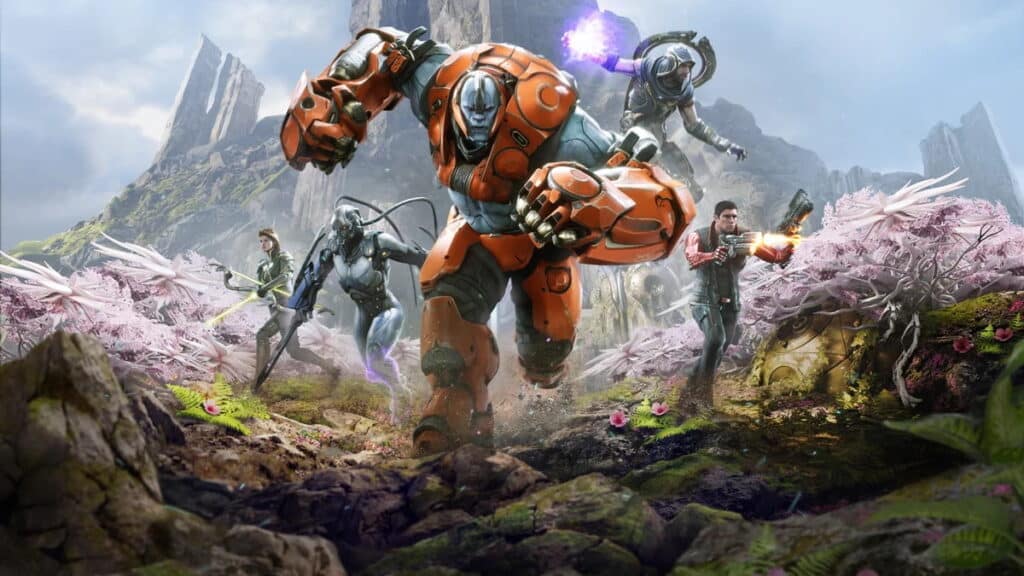
Paragon was Epic Games’ attempt at a MOBA, hoping to take on League of Legends and Dota 2. It offered a third-person perspective and a realistic, gritty aesthetic, but failed to take off commercially despite praise from its niche fanbase.
Two years after the 2016 release, Epic Games offered full refunds for all purchases, and $17 million worth of its assets were released for free.
The full budget for the game is again, unknown. The sum of its assets alongside estimations of its $12 million development budget suggests that the game cost at least $25 million to make, and that Epic Games would have lost all profit from the game after all purchases were refunded.
4. Hyper Scape (est. $30-50 million)
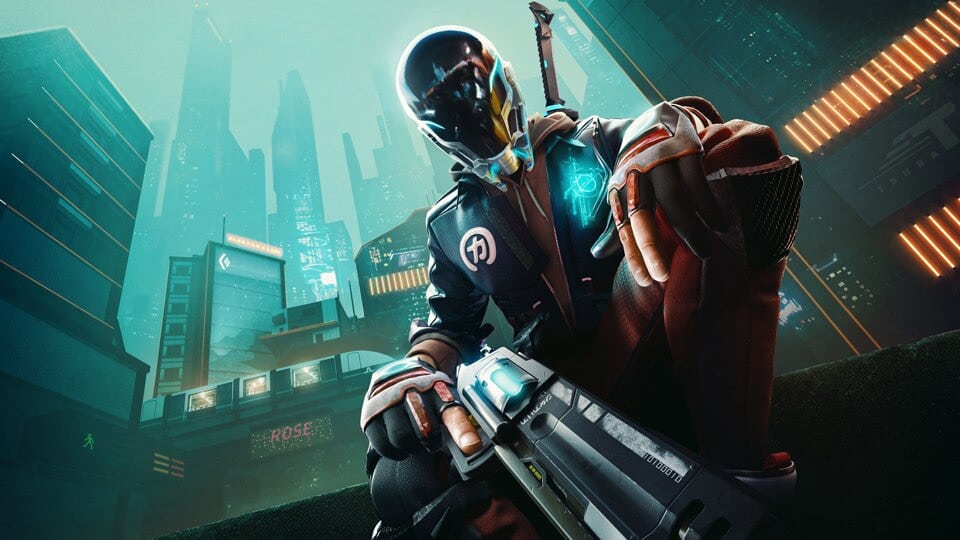
Ubisoft’s first attempt at a Battle Royale shooter was Hyper Scape, which was released in 2020.
Following on from the successes of Fortnite and PUBG, publishers saw the potential in the genre. There’s a particularly noticeable pattern of big-budget battle royale and hero shooters that failed miserably on release; Hyper Scape is just one of them.
Ubisoft’s shooter was set in Neo Arcadia, a world ravaged by climate disaster. Amidst this, 100 players are pitted against each other on a map that gradually sees parts of it disappear entirely.
One of the arms of innovation that Hyper Scape brought was audience participation. This was, according to the game’s creative director, a response to the prevalence of Twitch streaming and the fact that the “audience is not only the players anymore, but it is also the viewers.”
Unfortunately, this was not enough to attract the attention of players or viewers. Just a day after launch, it was reported that Hyper Scape had only 11,000 viewers on Twitch.
Eventually, the game’s player count and viewership sank so low that, just four months on from launch, Ubisoft was paying players in Ubisoft Store credit to play the game. It was eventually closed for good in 2022.
An exact figure is not known for the budget behind Hyper Scape. However, it is no secret that Ubisoft typically spends big on its games. As a live-op shooter featuring Twitch integration and new assets built onto the AnvilNext 2.0 engine, there’s a strong chance that Ubisoft spent upwards of $30m to $50m on this game, which is in line with the development costs slated by industry analysts.
3. Battleborn (est. $50-$60 million)
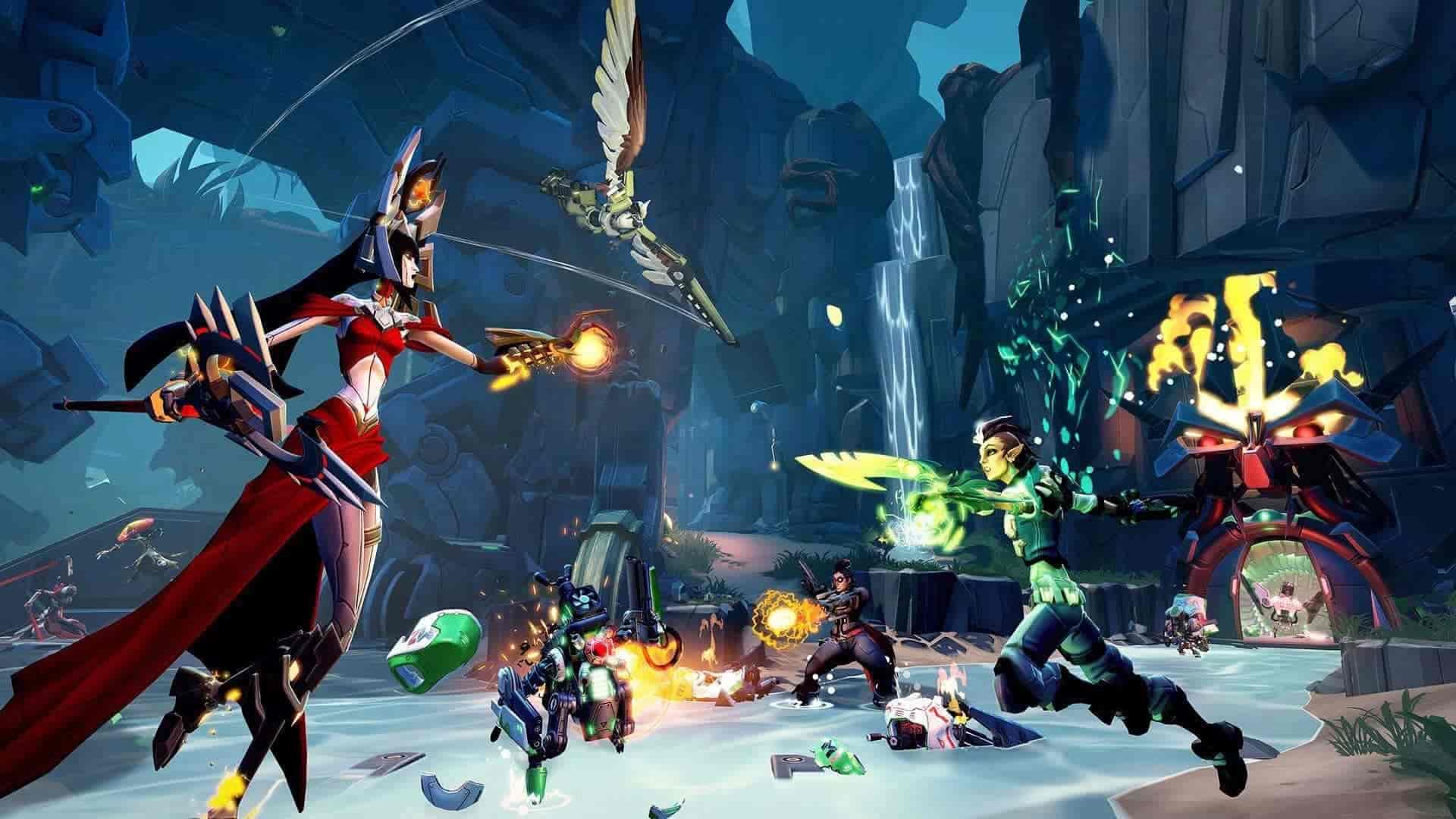
Gearbox Software is the studio behind the popular Borderlands series, but the pivot towards a live-service MOBA didn’t pan out with their release of Battleborn.
Its 2016 release was shrouded by the launch of Overwatch; Blizzard’s hero-shooter. The competition had stronger brand loyalty, and a bigger beta, and its identity and gameplay were much tighter. Since Battleborn fused MOBA and hero-shooter, players found it quite hard to grapple with the meta and mechanics, while the steep learning curve wasn’t helped by the confusing AI and visuals.
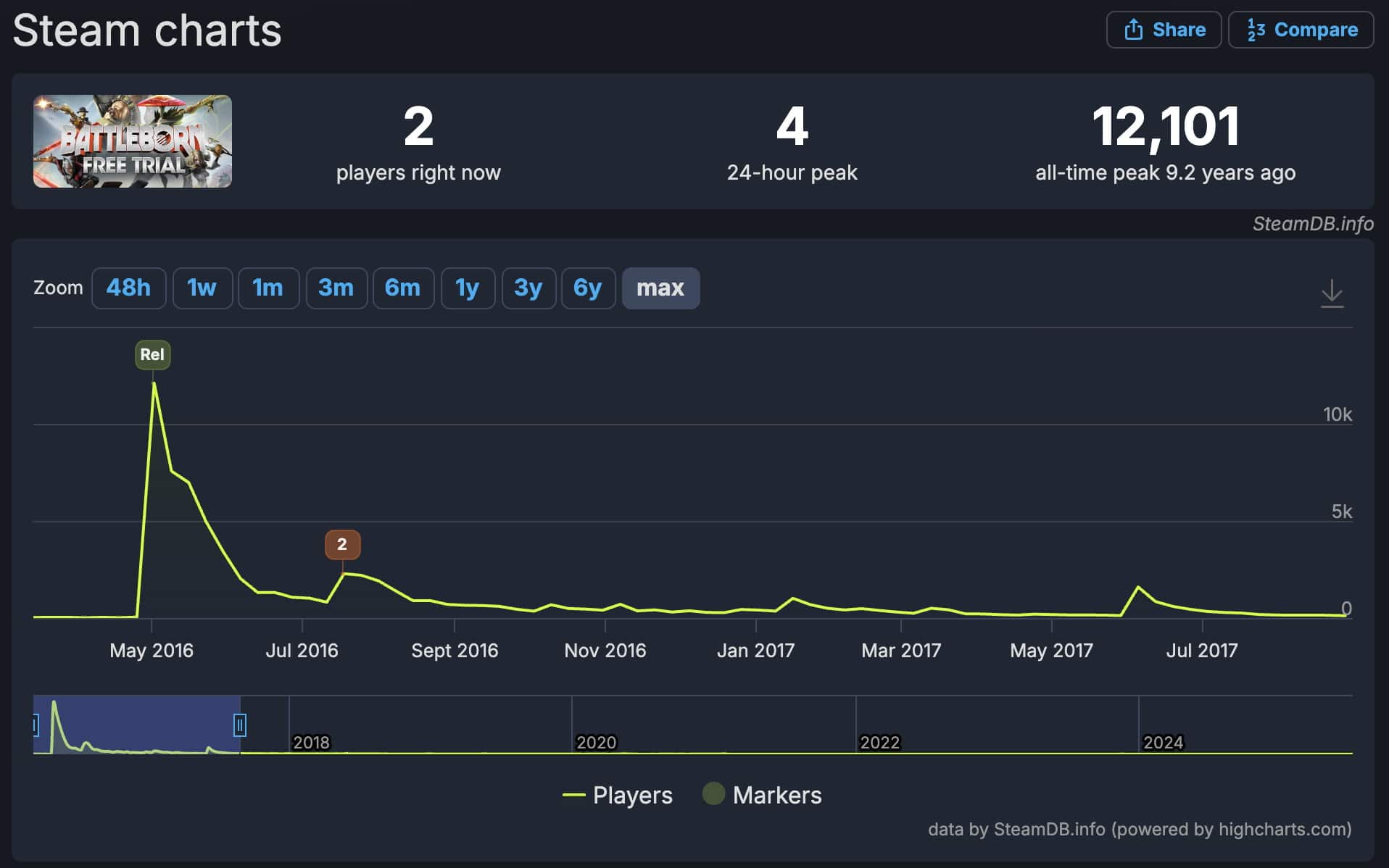
It didn’t take long for the player count to drop. The spike on the graph in June 2017 represents the moment it went free-to-play, a move that seemingly did little to recoup player attention.
Contrary to many of the other games on this list, Battleborn was not an obvious failure. Its servers were kept live for five years, and it was even a bestselling game for a period of time. This wasn’t enough, as analysts criticised poor sales performance and its estimated earnings of $18m in its launch month (via PC Gamer).
Like most of the other games on this list, there’s no definitive development budget to inspect. However, Gearbox said, at the time of release, that Battleborn was the studio’s biggest investment to date, costing more than both the first two Borderlands games.
Borderlands 2, for example, had a budget of $30-35 million, according to Gearbox CEO Randy Pitchford, so our estimations put Gearbox’s budget for Battleborn between at least $50-60 million.
2. Crucible (est. $60-80 million)
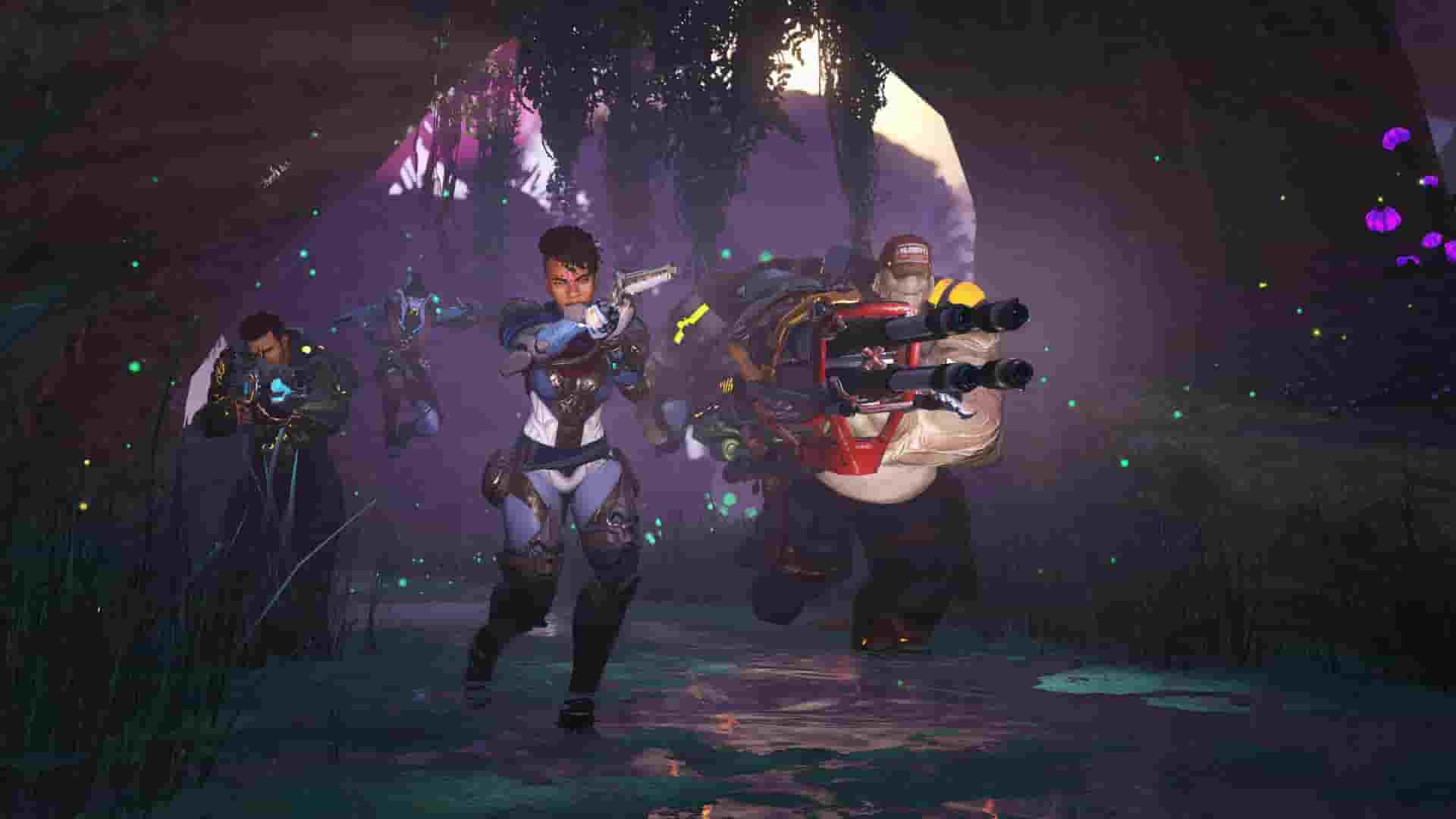
Crucible was widely recognised as Amazon’s first big-budget game, with analysts estimating that it cost between $60 and $80 million to develop and launch a game of this size.
This was a hero shooter with the typically unremarkable gameplay and character design that comes with lazy entries to the genre. However, one of the main reasons why sentiments towards the game soured was related to its server issues. For a multiplayer live-ops game, getting the online play right is crucial, and any slip-ups here are typically a death sentence.
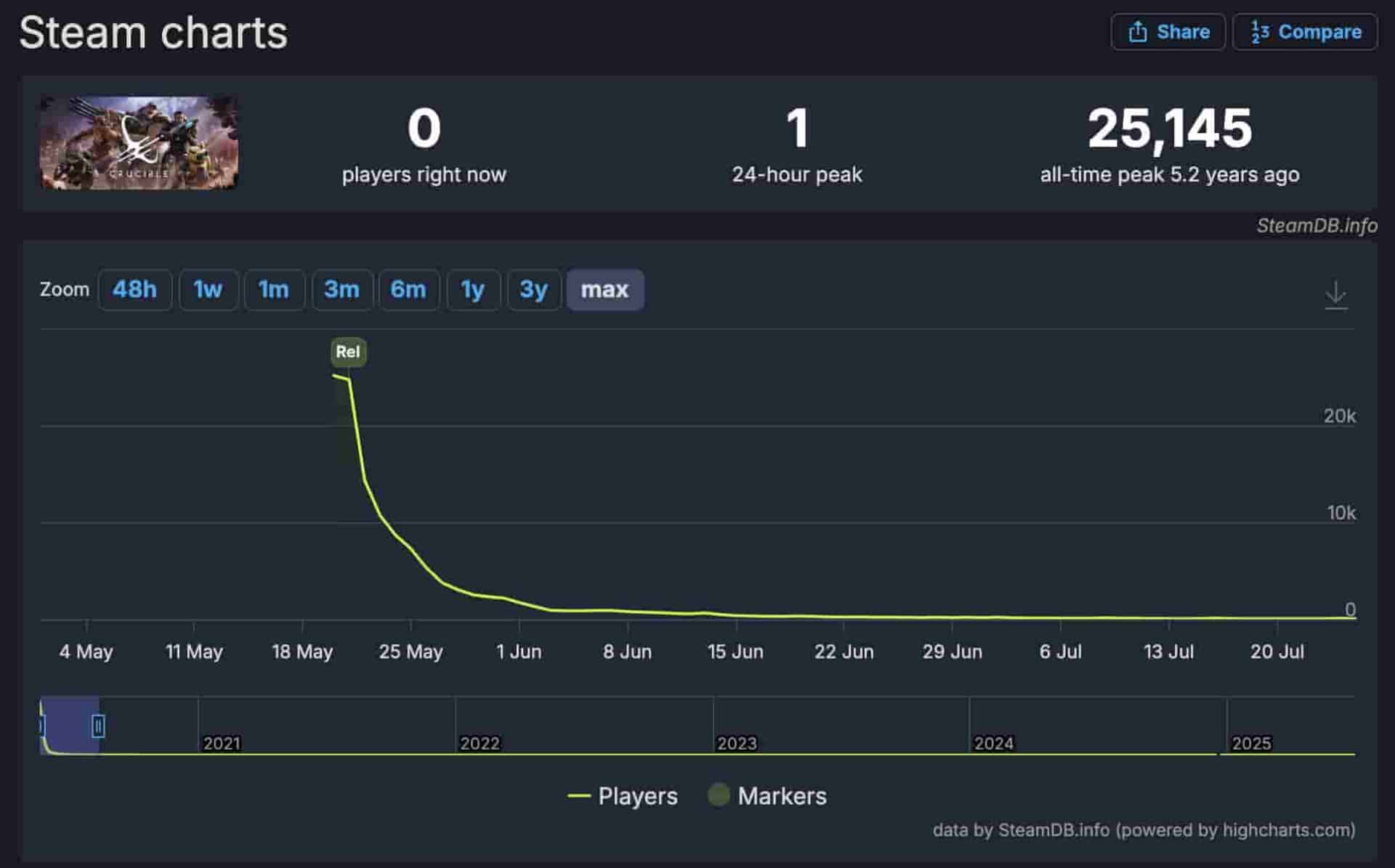
Exactly one month after its release, the daily player count dropped from 25,000 to 285 – that’s a decrease of 98%. Crucible was shut down just months after this, as the developers didn’t “see a healthy, sustainable future ahead of Crucible.”
1. Concord (est. $200-$400 million)
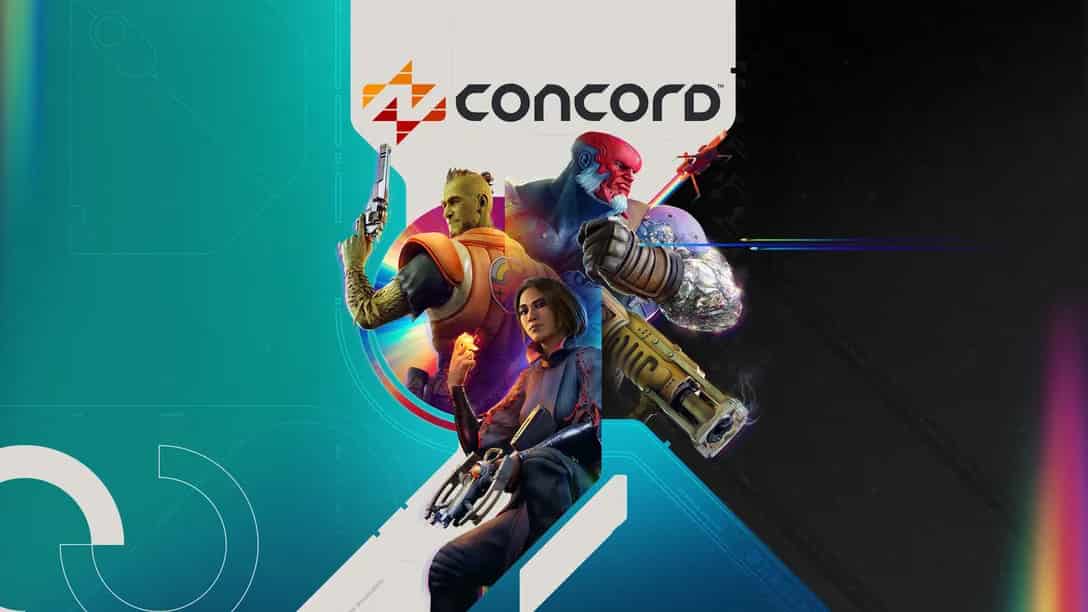
Concord is the biggest flop in commercial video game history in recent memory. The hero-shooter, developed by Firewalk and published by PlayStation Studios, had an estimated development cost of $200-400 million, potentially more than all of the other games on this list.
The game was doomed well before it was even released. It endured a miserable beta, faced an oversaturation of the genre, had little to no marketing, and became the centre of politically charged debate in gaming communities. The game was taken offline within a month, and then a month after that, Firewalk Studios was closed, too.
Conclusion
Overall, between $365-615 million has been spent on these five esports games that have failed quite miserably. There is a recurring pattern of battle royale and hero shooters being rushed out of development before the saturation of the market buries them under growing development costs. It seems that the spectacular failure of Concord has been a stark lesson for developers encouraged to create live-service hero shooters. The lesson being: don’t.
FAQs
Grand Theft Auto 6 has the biggest budget ever, with estimations ranging between $1.5 and $2 billion. With development having gone on for well over a decade, there’s no question as to how costs have soared so high.
The most notorious big-budget game failure is Concord, a hero shooter developed by Firewalk and published by PlayStation Studios. Its $200-400 million development budget was undercut after the game was cancelled a month into launch, and its development studio was closed shortly after that.
The most expensive game franchise of all time is Call of Duty. In recent court filings reported in Game File, $1.8 billion was invested in development across Black Ops III, Modern Warfare (2019), and Black Ops Cold War alone. These are only three of the games among a franchise counting well over 20 games, so we’d anticipate that a sum between $4bn – $6bn has been spent overall.
References
- https://arstechnica.com/gaming/2018/03/after-closing-down-paragon-epic-makes-its-assets-free-as-in-speech/ (Arstechnica)
- https://www.dualshockers.com/hyper-scape-interview/ (Dual SHOCKERS)
- https://www.theverge.com/2020/8/12/21365476/ubisoft-hyper-scape-twitch-launch-rough-low-viewership-battle-royale (The Verge)
- https://www.pastemagazine.com/article/hyperscape-free-10-dollars-ubisoft (Paste)
- https://www.pcgamer.com/overwatch-earned-269-million-in-may-analyst-says/ (PC GAMER)
- https://www.gamespot.com/articles/battleborn-is-gearboxs-biggest-investment-ever/1100-6435015 (GameSpot)
- https://www.polygon.com/2012/9/28/3425700/crazy-town-gearbox-on-making-borderlands-2 (Polygon)
- https://www.wired.com/story/amazon-crucible-release-first-big-videogame/ (Wired)
- https://www.fool.com/investing/2020/10/13/amazon-abandons-one-of-its-biggest-video-game-proj/ (Fool)
- https://web.archive.org/web/20201010002227/https://www.playcrucible.com/en-us/news/articles/final-crucible-developer-update (Web Archive)
- https://www.gamefile.news/p/call-of-duty-budgets-development-costs-black-ops-modern-warfare (Game File)
The post Big budget esports: Five games that failed spectacularly appeared first on Esports Insider.

